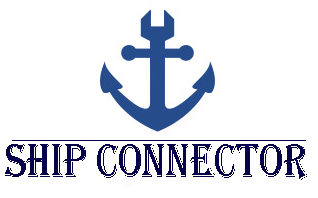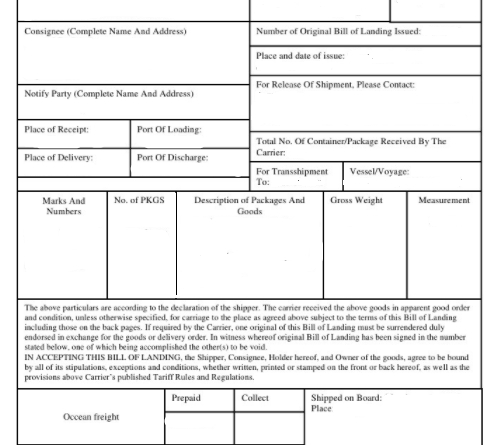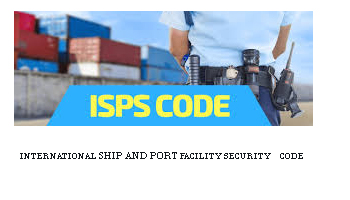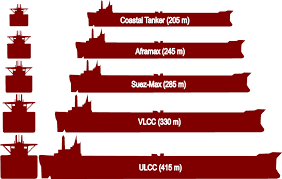What is the Bill of Lading
Contents
What is the Bill of Lading
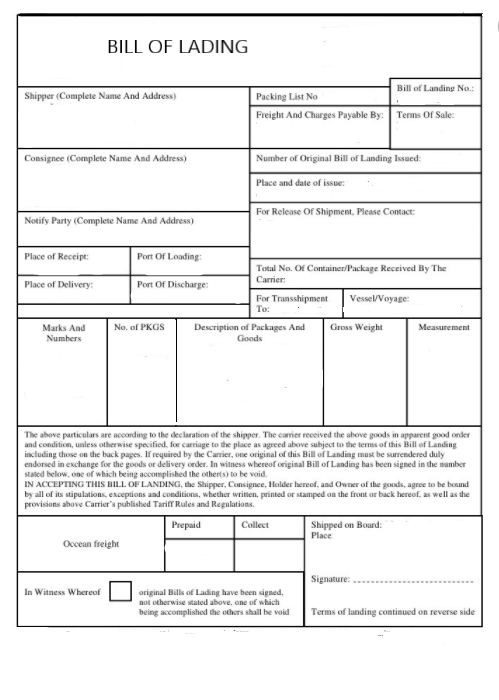
Bill of Lading
A bill of lading is a document which is issued by the master once cargo is loaded onboard.
It has three main purpose, it acts as
- A receipt which is issued by the master or his agents once all of the cargo is received on board for shipment (Master declare that x amount of cargo is loaded in his ship)
- It serves as evidence for a contract of carriage (Contract of carriage is signed separately but since carrier and shipper’s name is included in B/L so it’s a proof of Contract of Carriage
What is contract of carriage
Contract of carriage
A contract of carriage is defined as an agreement that is concluded between a carrier and a shipper for the transportation of goods from Point A to Point B for which the carrier receives the payment from the shipper.
To read difference between (contract of carriage) &(contract of affreightment) click here
- Title of the goods(this means that whose name is entered in the B/L as consignee becomes the title holder of the goods
Straight bill of lading and order bill of lading are two type of such example which can perform as title of the goods.
Straight bill of lading is a bill which is not negotiable and issued to a consignee in this case cargo will be deliver to him only
Order bill of lading is just opposite of a straight bill of lading and in this case there is no specific or named consignee ,an order bill of lading can be negotiated to a third party
The carrier will advise,the place and time of delivery of goods ,quantity of the goods and condition in which the carriers agent received them.
And then the individual is issued with a receipt ,the responsibility for the transportation of goods now passes on the carrier,in other words he has to deliver the cargo in same condition in which it has been loaded (hook to hook condition)
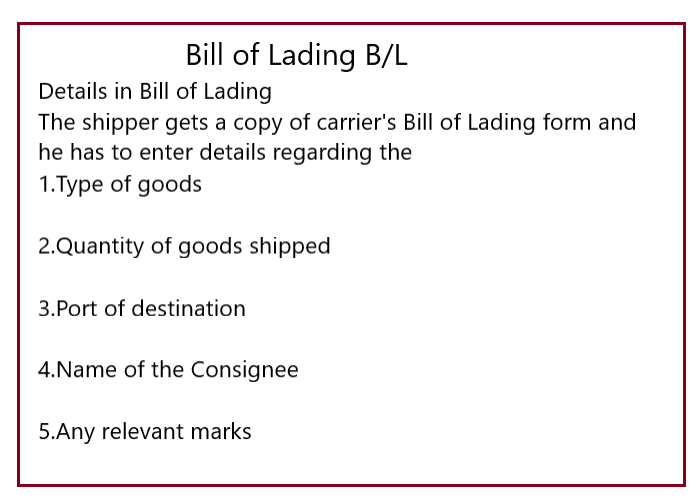
Details in Bill of Lading
The shipper gets a copy of the carrier’s bill of lading form and he has to enter details regarding the
1.Type of goods
2.Quantity of goods shipped
3.Port of destination and
4.Name of the consignee
5.Any relevant marks
The carriers agent will check the cargo and details entered at the time of loading and will acknowledge them.
The freight will be calculated and then three copies of Bill of lading will be signed and will be given to the shipper.
The shipper may then directly dispatch the bill to consignee by three medium, which are by land ,sea and air (the sea one master carries).
Once the vessel reach the destination port the consignee can take the delivery of goods by presenting original B/L
Bill of Lading in three sets :
Bill of lading are signed in the sets of three originals.
They are named as the first original, second original, third original on top of the bill of lading.
A duplicate copy with a stamp – “Non-negotiable”is stamed on.
Letter of Indemnity
In the absence of Bill of Lading B/L
In absence of B/L, If person wishes to take delivery of the goods, then he must present a Letter of Indemnity and the receiver must have reasonable explanation for why the B/L is absent.
General Rule of Bill of Lading

A) Where The bill of lading is issued to a charterer(whether the charterer is the shipper or buyer ) the governing contract is the charterer party .The bill of lading is a mere receipt of the goods on board the vessel. Neither party can claim under bill of lading.
B) Where the Bill of lading is issued to a shipper who is not a charterer evidences the contract of carriage then between the ship owner and the shipper. However,if bill of lading is then endorsed to the charterer then so long as the charterer keeps the bill of lading, the contract between the owners and charterers is the charter party and the bill of lading is a mere receipt.
c) where the bill of lading is issued to a shipper who is not a charterer to a third party,the governing contract is bill of lading.
Difference between Contract of Affreightment and Contract of Carriage
A contract of affreightment is a contract between the shipowner and the charterer where the shipowner agrees to carry the goods in his ship, or to allow the charterer the use the ship’s cargo space whole or part for specified voyage
A contract of carriage is defined as an agreement that is concluded between a carrier and a shipper for the transportation of goods from Point A to Point B for this service the carrier gets the payment from the shipper
The conventions & rules covering the Carriage of Goods by Sea
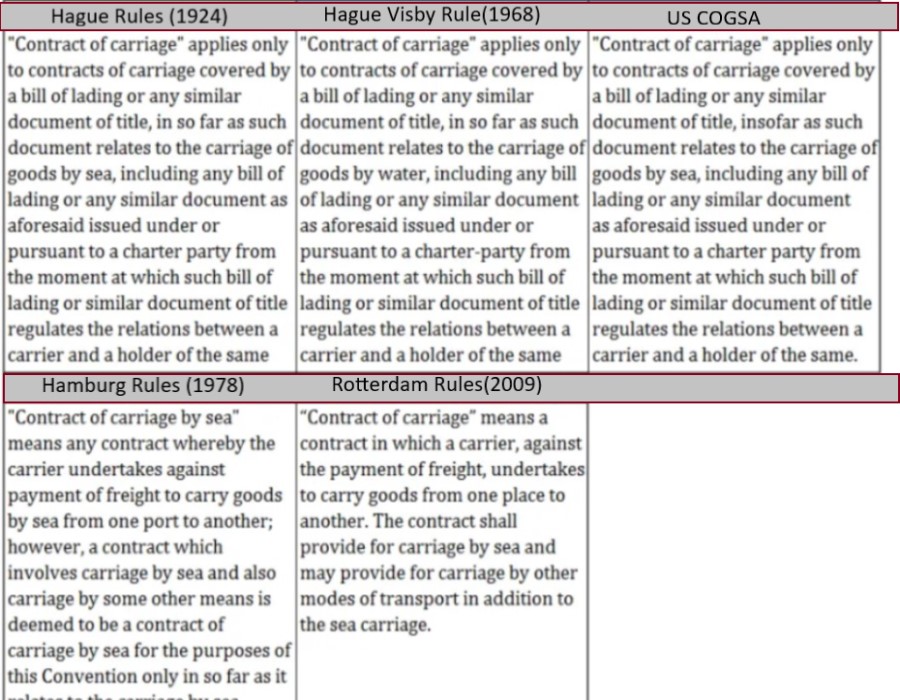
Types of Bill of Lading
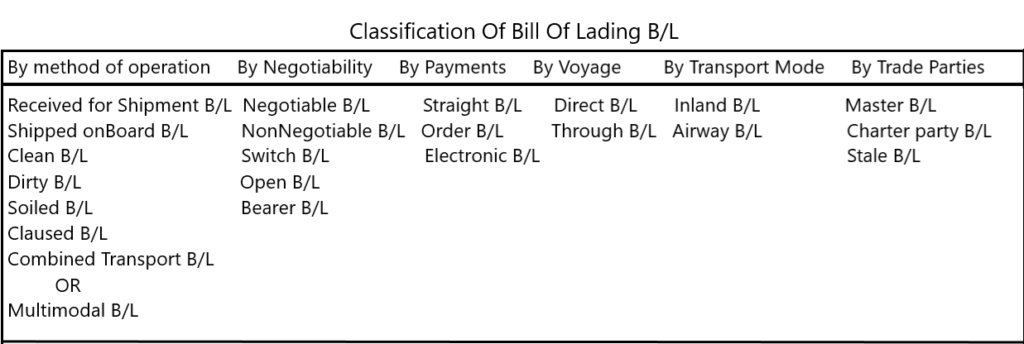
By Method of Operation
Received for shipment B/L
This B/L Confirms that the carrier received the goods at port for loading onto a specific ship but does not confirm onboard as B/L says received for shipment B/L
The agent or charterer issue this type of B/L to Shipper
Shipped on board B/L
Shipped on board B/L
This states that the carrier has received and loaded goods physically onboard the ship.
This type of B/L is signed by shipper and ship owner
Clean B/L
Clean B/L
Used when the cargo has been loaded Onboard ship and
When there is no discrepancy between description filled by shipper and actual goods loaded Onboard
Dirty B/L
Dirty B/L
Its use when the shipowner claims an objection about the condition of the cargo which is not in good condition, he can include a clause thereby stating that the bill of lading to be dirty B/L along with the remarks as per the condition of the cargo condition. E.g. torn , broken or shortage in the quantity of the goods etc.
Soiled B/L
Soiled B/L
This is just opposite of Clean B/L , It reflects that the goods were received by the carrier in anything but good condition,and its just like Dirty B/L
Combined transport B/L
The cargo which is transported by sea and finally reaches destination by land eg from sea port to destination where cargo has to transport via trucks or other similar land locomotives i.e through multi-model transport
Claused B/L
Claused B/L
Used when there is a difference between discrepancy in B/L and actual goods
Master can mark his observations about discrepancy ,damage etc on the B/L once goods are loaded for example ‘’wet grain packets”
Also called as unclean,dirty,soiled B/L
There are Payment issues with this kind of B/L as the Importer would like clean B/L especially if the payment is done through letter of credit
Bank may refuse to pay on claused B/L as Different clauses are add in this type of B/L and at the time of collecting payments different cluases added can creat unnecessary trouble.
By Negotiability
Negotiable B/L
Negotiable B/L
Original B/L that can be transferred to a third party by the consignee
It must be a clean B/L
It is instructed to make the delivery of the goods to the person who is in the possession of the original copy of the bill, which itself signifies the title.
Buyer/receiver or his agent can receive the cargo after presenting original B/L,the cargo will not be released in the absence of original B/L.
Bank do not prefer this type of B/L
Non Negotiable B/L
Non Negotiable B/L
B/L that cannot be transferred to a third party by the consignee
Goods will be delivered to the named consignee only.
This type of bill of lading fixes a specific consignee/name of the receiver to whom the cargo will be shipped and delivered. It, however, does not declare the goods ownership,the assigned receiver/ buyers can claim the cargo by confirming their identity.
Title of B/L cannot be transfered
It however does not confirms the ownership of the goods as whose name entered is entitled to receive cargo but it do not declare who is the owner of cargo.
The main difference between the two types is title (ownership) of the Negotiable B/L can be transferred to another party while the Non Negotiable B/L is consigned to a named party and hence he/she has to be the final recipient of the cargo as the title of this type of bill of ladings cannot be transferred.
Switch bill of lading
Switch Bill of Lading B/L is generally requested by the consignee of the cargo when he do not want other co buyers or new buyer to know the identity of the shipper,that time Switch B/L is requested by the consignee from the shipper
Open bill of lading
Open bill of lading – This type of B/L is a negotiable B/L,in this type the Consignee transfer the B/L in favour of final buyer but for this he needs to endorse the name of new buyer in original B/L and for his identity must authenticate his signature.This type of B/L can be transferred as many times. Switch bill of lading is also a type of open bill of lading and is negotiable in nature.
Bearer bill of lading
The bearer B/L is used when the consignee wants to re sale his cargo before it reaches final destination without endorsing and authentication. The person who require to get the delivery of cargo can do so by entering his name against the consignee and surrender B/L so that he can get the delivery of cargo.
This type of B/L is freely negotiable.
Bearer bill of lading is highly risky and extra ordinary care is required.
The cargoes which are sold in bulk and require to turn over in small quantities make use of these types of B/L.
By Payments
Straight Bill of Lading B/L
Straight B/L
Carrier received payment in advance and not on credit
Goods are directly shipped to final receiver
This type becomes Non Negotiable type
bank do not give importace to this type of bill of lading
The straight bill of lading says that the goods are carried for specific person and cannot be transferred to anyone not even to his representative.
That means only the person whose name is mentioned can take delivery and cargo cannot be sold by transferring the bill of lading to any other name.
Mostly this type of bill is used for military cargo as cargo and its movement is required to be kept secret and delivery to be made to the person whose name is entered in B/L
OrderB/L
OrderB/L
Goods will ship before any payment is received
Generally used when goods are sold on trade credit
Shipment to either distributor or customer
Consignee or bank can endorse the B/L in favor of another person or final receiver
Negotiable instrument and can be traded
Order bill of lading is type of B/L used all over the world.
Mainly it ensures that the goods deliver safely to the bonafide holder of B/L .
It is general cycle of the shipping that ship has to visit many different ports where there is great difference in language, practice and procedure, the captain of ship might not be comfortable with the local language and clearing procedure of locality, there may be chance that people may collect the cargo fraudulently.
To avoid this situation and avoid future cargo claims and litigation, ship’s agent at the discharge port is given responsibility. At the discharge port the consignee in due course of the B/L is required to surrender the B/L to this ship’s agent ,who will in return verify the authenticity of B/L and the consignee claiming the cargo delivery.
After the agent verify the genuineness of B/L and consignee identity will deliver order and verified B/L
After surrender of B/L and delivery note the cargo is released for delivery.
Electronic “Telex” relase B/L
Electronic “Telex” relase B/L
Carrier agent at origin notifies the agent of destination through E-mail or any other electronic messaging system to release goods
By Voyage
Direct Bill Of Lading
Direct B/L
One vessel transport and delivers goods at the final destination
Through Bill of Lading
Through B/L
Allows for transportation of goods both within domestic borders and through international shipment i.e via mult-modal transport (sea and inland)
Transhipment at carrier expenses but at consignee risk
What is the difference between multimodal and through bill of lading
In through bill of lading the cargo is transported via sea and inland waterways.
In multimodal bill of lading cargo is transported via sea and land,on land through rails,trucks etc
In through bill of lading, carrier is responsible only for sea transport.
Transport mode
Inland B/L
Inland B/L
For transportation of goods over land
Ocean B/L
Ocean B/L (port to port shipment)
For transportation of goods via sea
Airway B/L
Airway B/L
For transportation of goods via air
A type of through B/L
By trade parties
Issued by freight forwarder to the shipper
Generally used when shipper’s cargo is small part of a bigger consignment
Also called as Forwarder B/L
Master B/L
Issued by shipping line (carrier) to the freight forwarder for the bigger consignment (full container load)
House B/L is a negotiable document and acts as a normal B/L unless otherwise specified
Other forms
Charter party B/L
Charter party B/L
Charter party agreement-under this contract a charterer hires a ship from ship owner for a voyage or time charter
B/L issued by charterer and not by ship owner
Lesser preferred by banks for payment under letter of credit as ship owner may lay a claim on cargo(in case of dispute with charterer)under charter party contract
Stale B/L
Stale B/L
B/L presented to its consignee or at a bank after last date specified inLC
A B/L may be rejected by the bank if presented more than 21 days after date of shipment.
To read about Types of keel Click here
